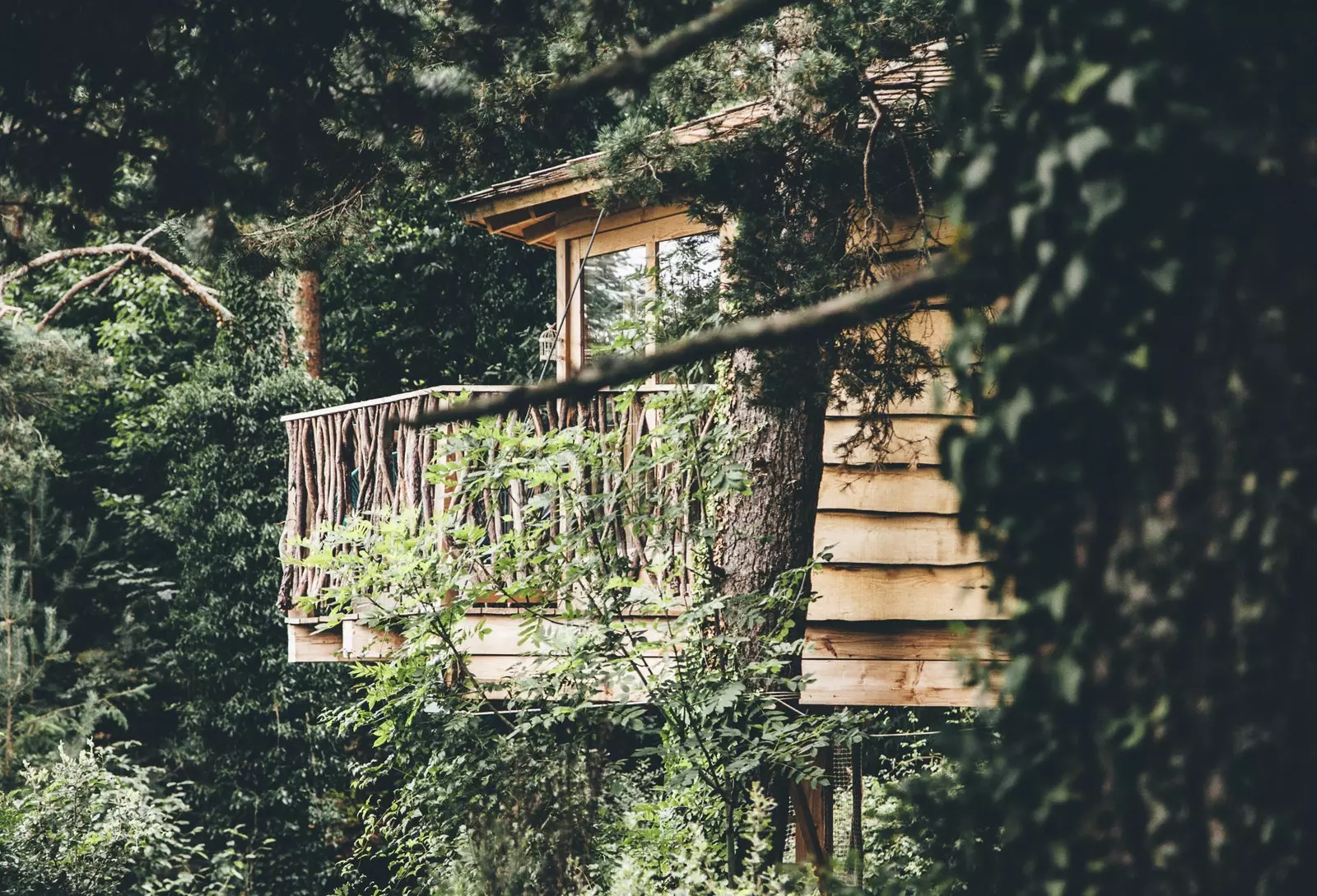
An idyll between branches, forest and home
In recent months we have jumped, without a rope and headfirst, from the cabin syndrome to wanting to have one of our own in which to get away from everything. The dream of the cabin, the cabin as a radical home to return to the origin and listen to us.
They have always been there, in our collective imagination, as Heidi's grandfather's everlasting cabin that we all, once, wanted to inhabit. The horror movies he appropriated it by taking advantage of the Buddhist principle “If a tree falls in a forest and no one is around to hear it, does it make a sound?”; changing it to "If someone screams in a forest and no one is around to hear it, does it make a sound?"
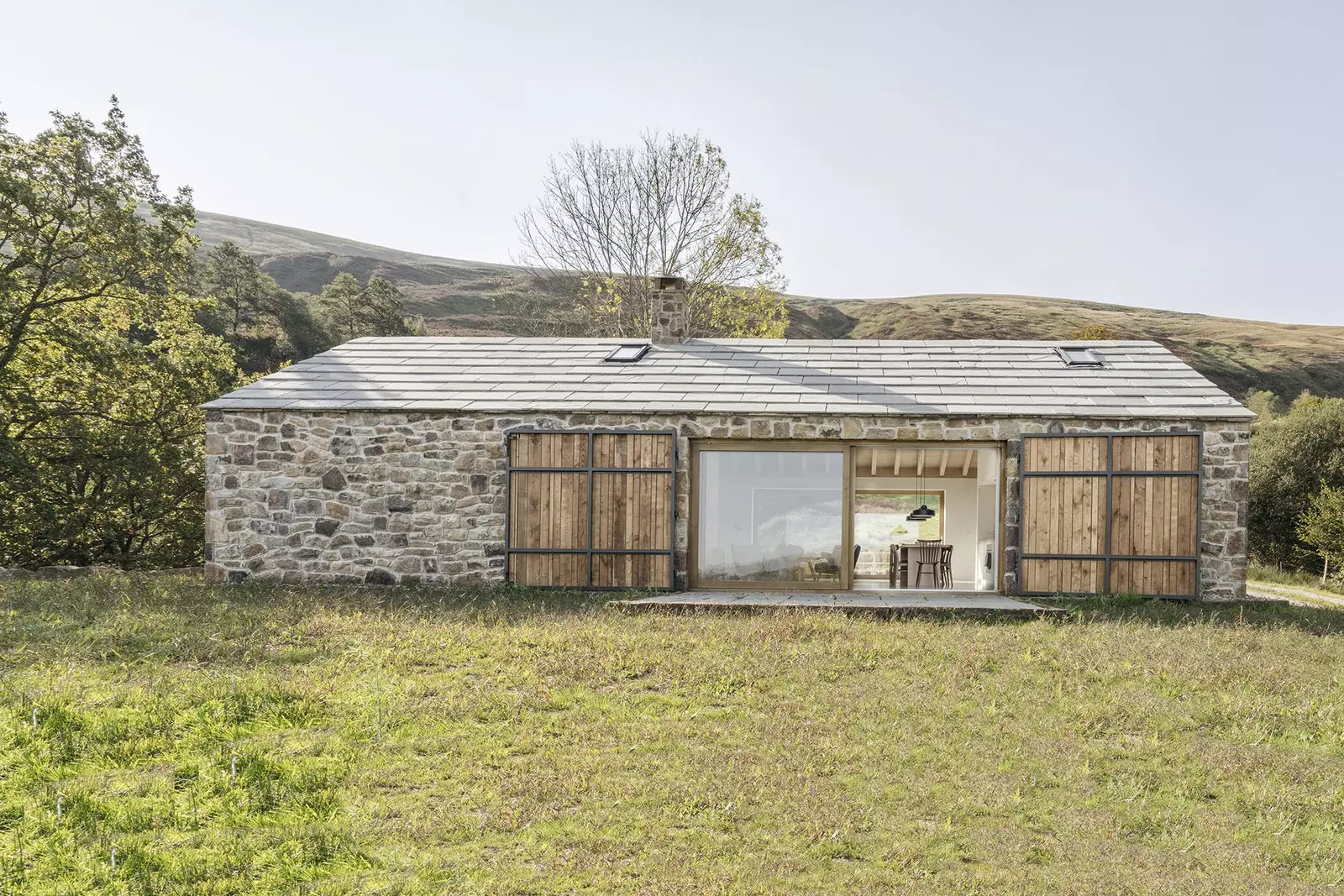
Villa Slow, in the Pasiegos valleys of Cantabria
The cabin is a refuge, it is nature, it is an idyll, it can even be a cry and terror. But it is, above all, the primitive home, the humble origin of our houses and the place that, like a mother's womb, shelters those who yearn for silence –that white noise produced by nature– and they need solitude, creators who seek to break their routine, get rid of the mundane and avoid coverage and the deafening noise of the interference of daily technology.
A simple shack, a humble barrack, as a political weapon. Hemingway in Sun Valley, Mark Twain in Edmonton, Thoreau and Walden Pond in Massachusetts, Wittgenstein in the Norwegian Sognefjord.
The room of her own that Virginia Woolf asked for for the women was, in truth, an entire cabin in the middle of nowhere for those men that they could get away from society, work routine and consumerism and focus only on their thinking.
“But, for the woman, I thought looking at the empty shelves, these difficulties were infinitely more terrible. To begin with, having a room of your own, let alone a quiet, soundproof room, was unthinkable." Woolf sentenced. The cabin as a privilege.
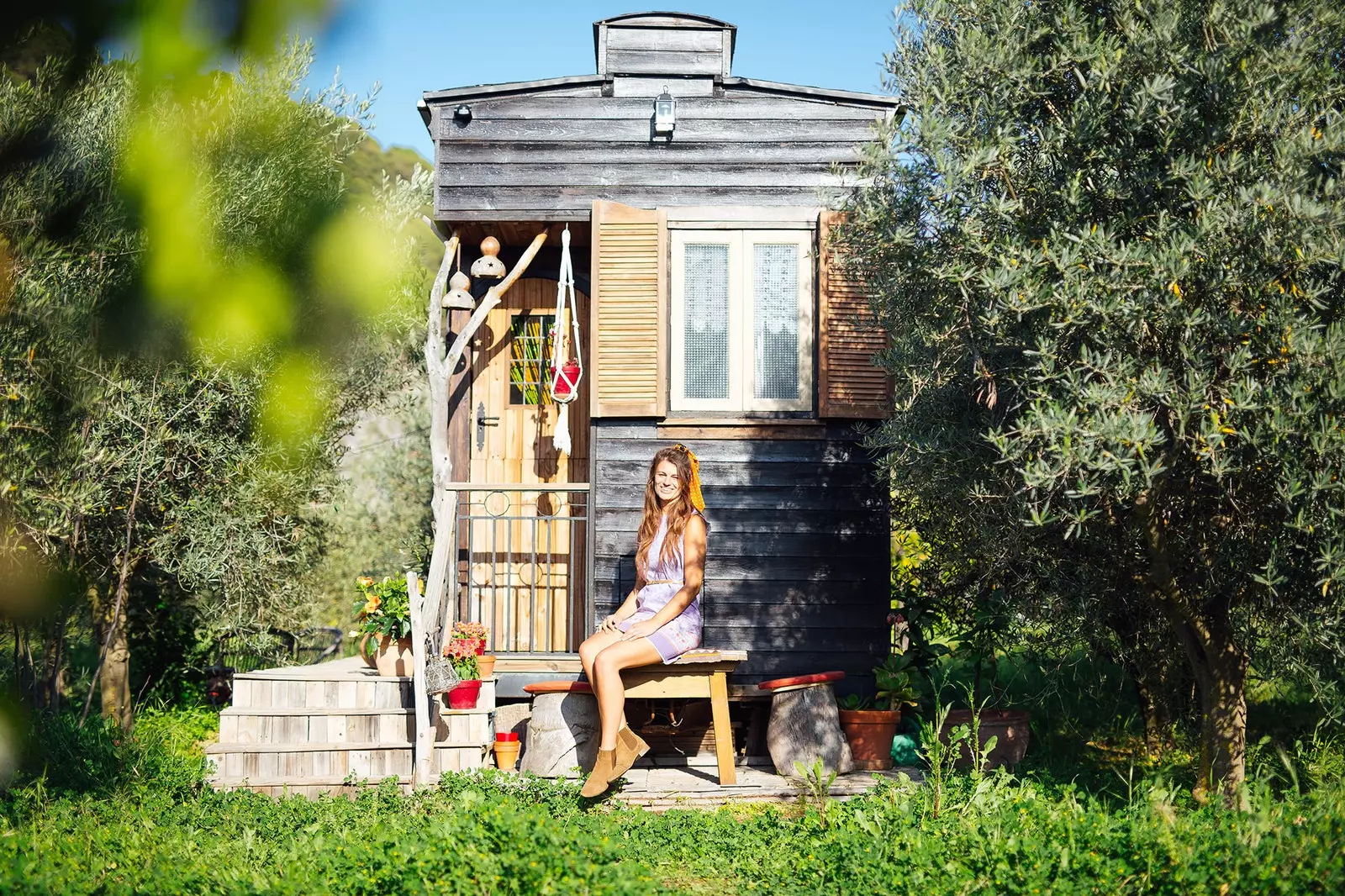
'Stay Wild' is a large world map of cabins, yurts, tree houses, tipis...
The cabins are back . And perhaps it makes sense that they do it now with the force with which they have done it: “There is no doubt that in the hives and dungeons of the cities, poetry can no longer comfort, it lacks weight, because the pact between the natural world and that of individuals has been broken. It is no longer harvested: it is only hunted, chasing profit. Lives are no longer exercises of pleasure and value, but only a means to amass worldly goods”, reflected the Pulitzer Prize winner for poetry Mary Oliver in his essay the indomitable writing (Ed. Errata Naturae).
The countryside also becomes, in its own way, a currency of exchange; also the cabins have resurfaced in the market as a solution to our nostalgia from the asphalt. A boom in which, luckily, green shoots emerge that make us believe that yes, Yes, change is possible from what is attainable and possible and not from privilege.
Today hoteliers are committed to wood and simplicity, researchers are looking for the sustainable home of the future in a compact format, psychologists investigate the benefits of fresh air to combat restlessness, fatigue and laziness so latent in this pandemic moment.
“We have suffered a temporary shock in which, necessarily, we stop to reflect and many of us realized that the pace of life we led was not logical. Consumerism, the 'problems of the first world' did not let us value what is important. Now we see it necessary to recover the minimum life. It was already something that had been ruminating with the debate on the emptied Spain: the return to the beginning. The pandemic has confronted us with the big question: what do we want in our life? Can we live in a more responsible way?
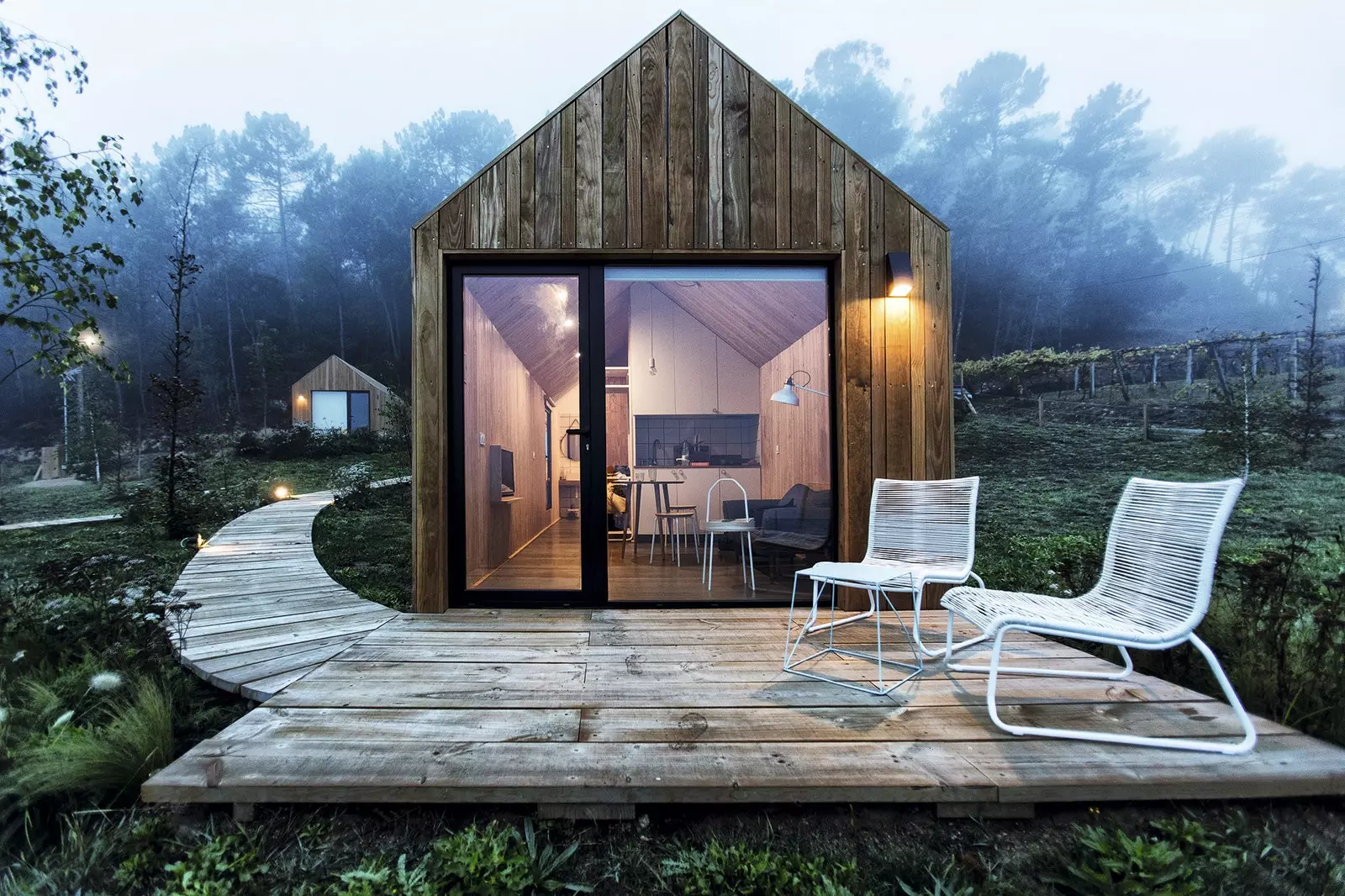
Dwellings in Ulla, in Galicia
who speaks is Eve Morell, content strategy specialist who has put a stop to her life to change the city of Malaga for a town, while she hit a sprint to talk about everything that worries her in a newsletter that she launches every Thursday, called The Cabana Club and that you will recognize by her welcome mantra: "Hello, greetings from the depths of the forest."
LIFE BETWEEN TWO PLANES
She doesn't live in a cabin; but she has indeed sought that intermediate point between the city and total isolation: “Life between these two planes is necessary and feasible, both physically and monetarily, without having to completely disconnect, promoting the craft and local market”.
She in her club proposes some guidelines to get it in the section 'Your house, your cabin', with the one that impregnates the 'cabañil' obsession to the gotelé of your walls: the Kone designer teapot, the Hey prints, the Field Notes notebooks... or that playlist that grows every Thursday and that makes us travel with Bonnie 'Prince' Billy, Brian Eno, Mogwai...
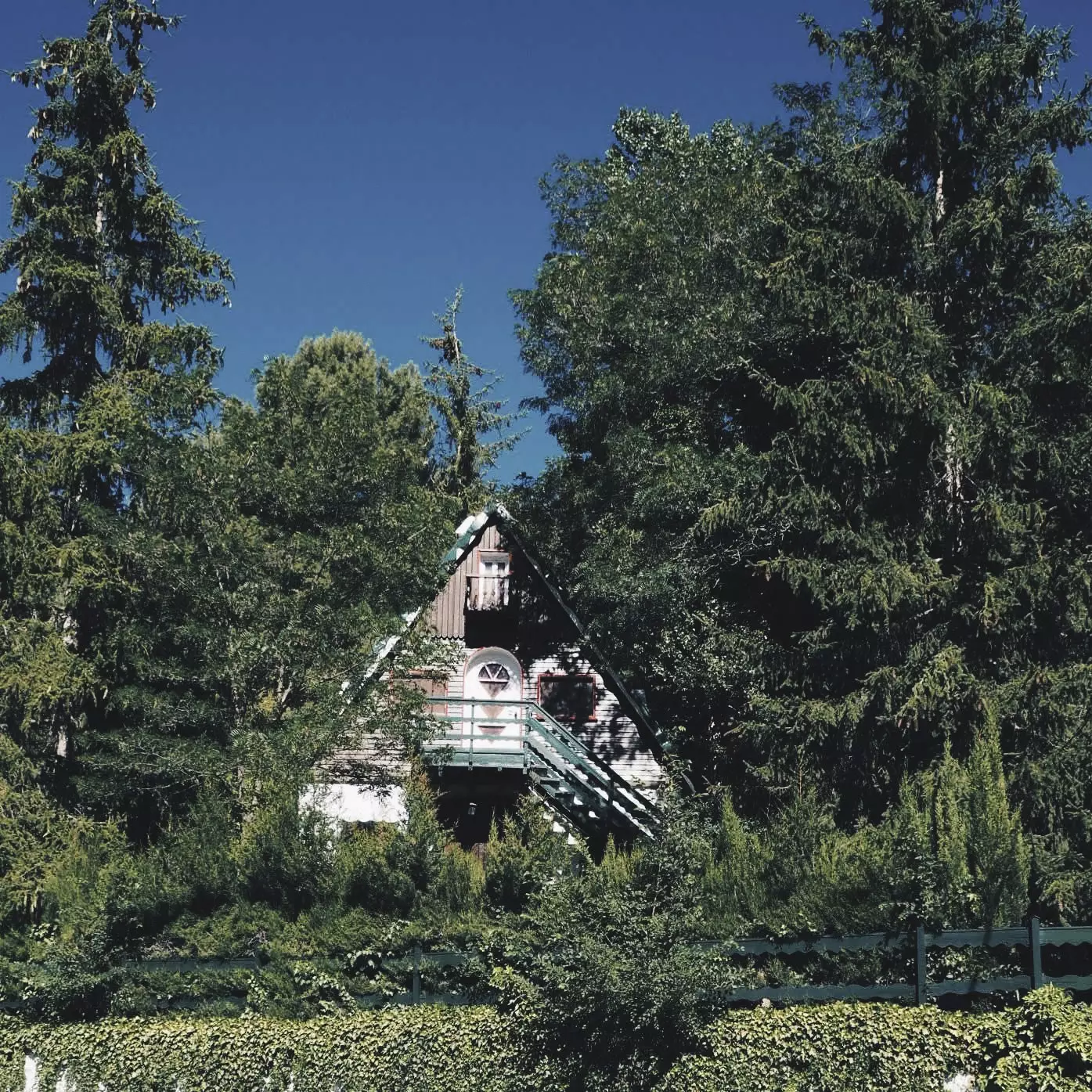
The idyllic "cabin of the dwarfs" that the people of Granada admire on the way to Sierra Nevada
Technology also manages to bring the field into our living room, with interactive maps that allow us to listen to any forest in the world (Sounds of the Forest) or design the environment we want by mixing the soundtracks of nature as we please (Noisli).
For Eva it all started as a child with the “cabin of the dwarfs”, as Granadans popularly know, an alpine-style construction located in the Sierra Nevada; a private house that, to this day, still evokes all that magic that it suggested to her as a child.
A) Yes, Eva hunts down cabins that bring magic, fantasy, that play with the impossible, as in the case of Capanna to Capocotta. This is the project of Julio Lafuente, Spanish architect who at the beginning of the 60s made his utopian dream come true in the region of Rome: a cabin in which geometry is the author's hopscotch, a cabin to play with the triangular shape by superimposing beds in a staggered manner. But that children's game has become the present and a possible ecological and sustainable future.
“If we go out into the field, we have to do it in a balanced and connected way”, comments Eva, and she puts us on the trail of Louis Velasco. This doctor in architecture and environment has taken these principles to the maximum in your construction of the perfect cabin. How? Flipping it over: not all cabins are suitable for all destinations. This must adapt to the type of soil, to the weather to become an inherent part of the environment.
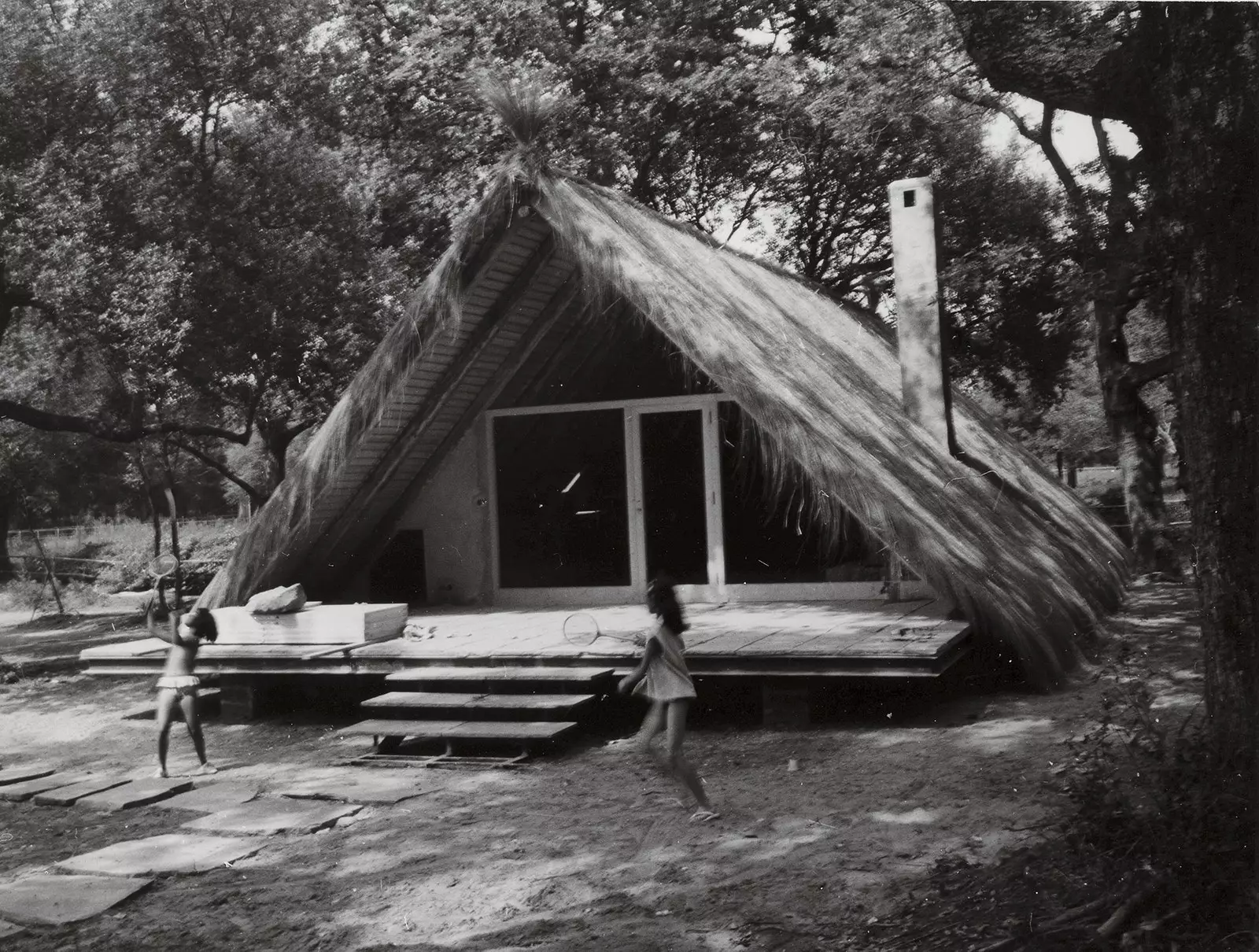
Capanna to Capocotta
Luis came from Mallorca to Quito with a scholarship “to apply energy efficiency in projects for people without resources” and, with the help of his partner Angel Hevia, he managed to give life to one of the three prototypes (for three different types of climates) that he had in his hands.
thus was born 'The house of Miguel and Rosa', halfway between “something commercially attractive and the inhabited laboratory in which to test all the small investigations regarding insulating materials, low-cost construction systems...”.
What should the truly sustainable home look like? “Low ecological footprint (that has consumed few natural resources in its construction and emits a limited amount of CO2), high energy efficiency and that once its useful life is over it is easily reformable, reusable or recyclable”. Housing must adapt to the climate crisis, to the social and economic reality of those who inhabit it. The cabin as a universal home.
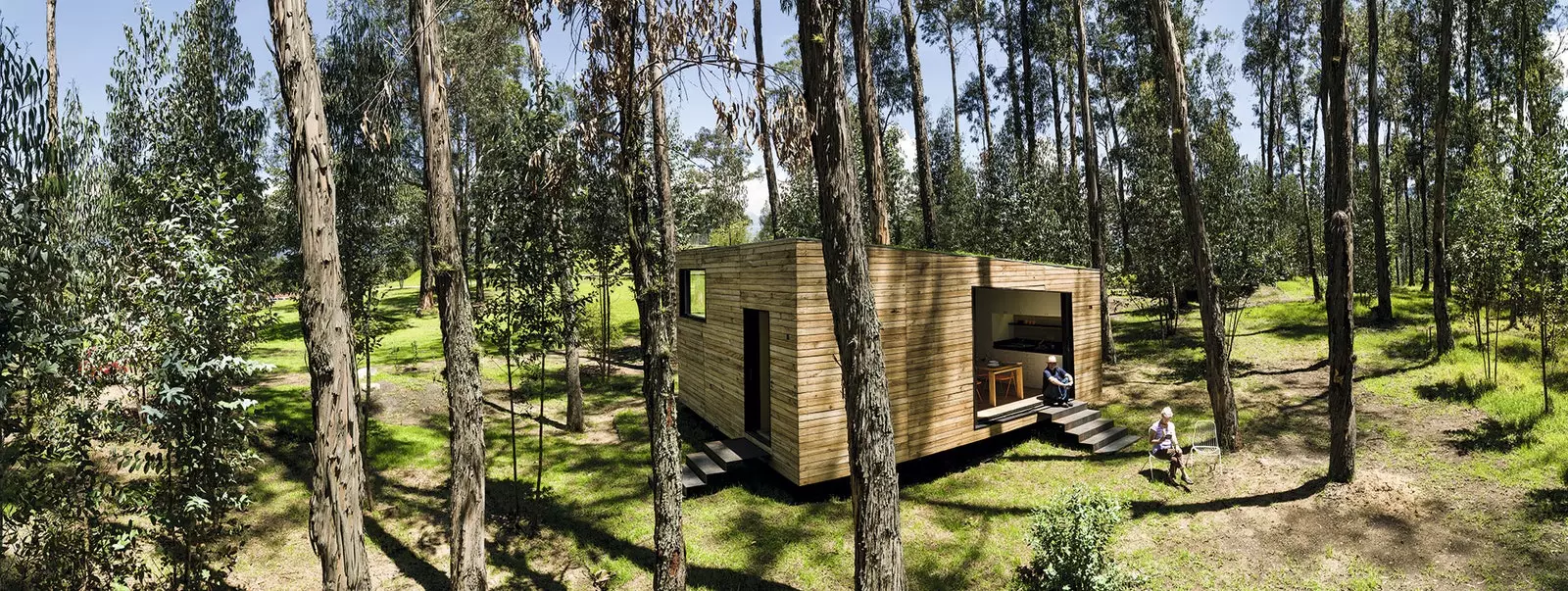
'Miguel and Rosa's house' in the forest of the University of Quito
And a conclusion that differs from the study he did in Ecuador: not all buildings, however fast or cheap, work for all environments, and therefore, “the objective is restore the chain of knowledge that is broken when a mistaken idea of prosperity imposes an erroneous model for too long replacing the traditional model”. The cabin as a return to craftsmanship and ancestral knowledge.
Miguel and Rosa lived in this cabin in Quito for a year. And now, it is on Mallorcan soil where Luis is working to adapt it to the Mediterranean. “I realize that the skin of the house must change and respond to a new grove, to other species; You must learn to protect yourself from the sun, open up to the breezes...”.
THE ABANDONMENT OF THE TRIBE
The cabin as a living being. So alive that sometimes it has its own name, like that Niadela in which the journalist Beatrice Montanez She sheltered herself for five years, away from everything and everyone; a house that was a refuge and is now a book (edited by Errata Naturae).
In it, two realities are shown: the author's survival diary and reflection, self-knowledge and being able to dispossess oneself through "the abandonment of the tribe", of separation, of isolation. Once again our own room that comes to disarm us, to deconstruct to revive. To be a phoenix in the deepest loneliness and in the face of the harshest conditions.
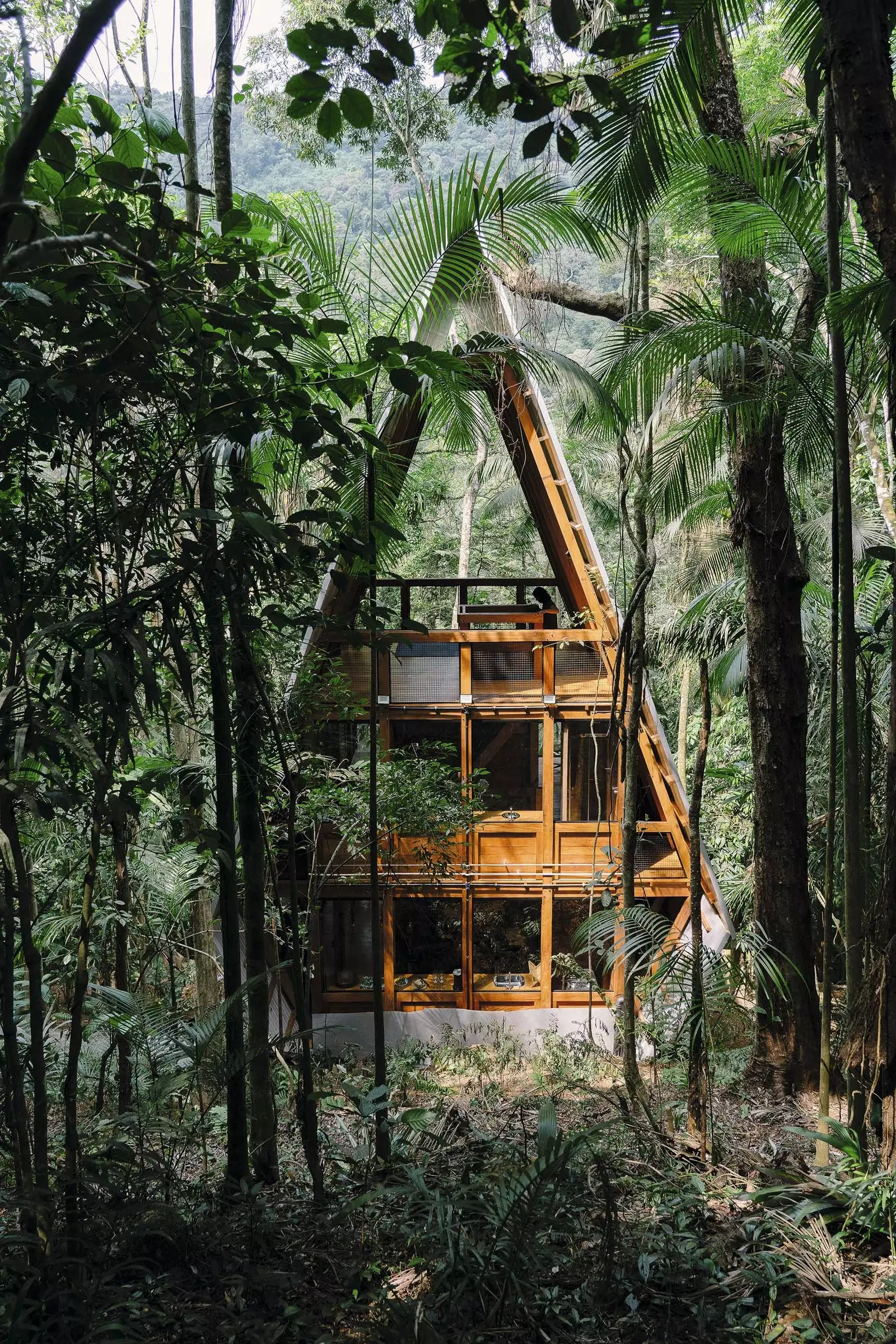
The Monkey House is the dream of architect Marko Brajovic who designed the "perfect guest house"
“I have learned to be at peace after so many years at war with myself (...) Surrounded by nature I have learned to understand its language”. Not in vain, Beatriz adds as an epilogue a glossary of all the birds and animal species with which she lived during those five years. Tawny owl, petrichor, honeysuckle, fleece, blush, Waldeinsamkeit (sensation of loneliness in a forest)... the semantic field of the cabins (of the forest, of the environment, of life) is beautiful and infinite.
Contributing to this abundance are projects in which dispossession is not radical, nor is isolation. Like any consumer good, the cabin now floods everything, has been caught up in the game.
There are those that reach architectural excellence, such as those of the Albeida Forest In Outes, A Coruña, winners of the 2020 Architecture and Urbanism award from the Higher Council of Colleges of Architects of Spain, and there are some designed to be transported and deployed wherever we please, like those of the Latvian start-up Brette Haus or the galician Quechova. There are some to stay in idyllic places ( Songe de Coucoo Spa , in the lakes of the Franche-Comté region), to become children again (Cabanes als arbres, in the Sant Hilari Sacalm forest of Girona), to receive friends in the middle of the forest (Monkey House, in Paraty, Brazil ), to dream of being wild but with all the comforts (Maidla Nature Cilla, in Estonia)...
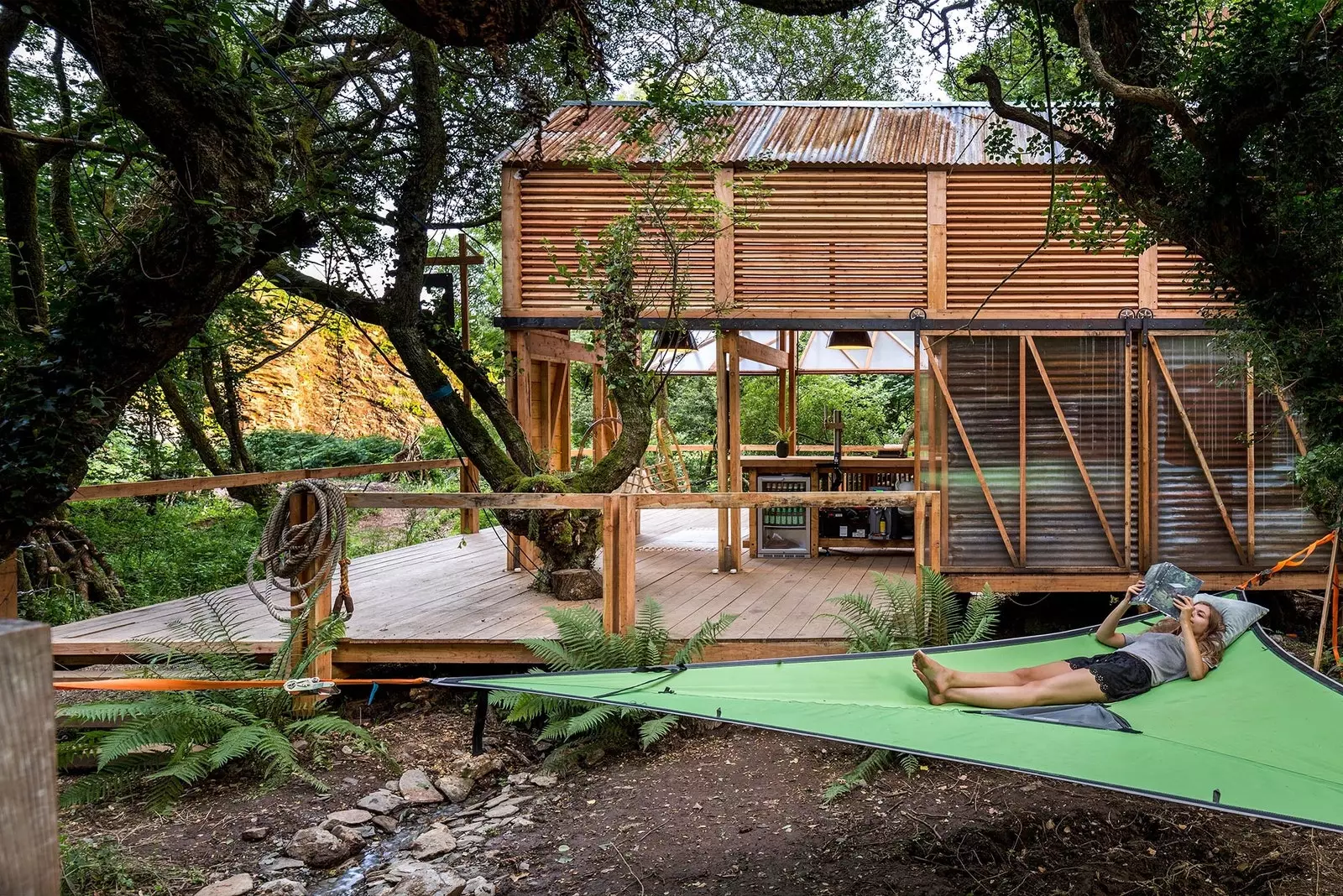
'Stay Wild' is a compendium of magical places straight out of a story by the Brothers Grimm in which we can reserve space
All of them will give us the dream of the cabin, the mirage of disconnecting even for a few days. Something like this happens in stay wild (Ed. Gestalt), a coffee table book and a large world map of cabins, yurts, tree houses, tipis... Magical places straight out of a story by the Brothers Grimm where we can reserve a space, as in Big Sky Lookout, in Devon, the Cornish pallozas or the mill-hotel with views of the Alto Alentejo.
but also know stories of individuals and families leading a pastoral way of life and sublime solitude. Stories of those who have the privilege of being able to leave everything to relocate and develop their activity anywhere, or reinvent yourself in a profession linked to the land: carpentry, agriculture, shepherding...
“When you walk out the door in the city there are thousands of stimuli competing for your attention; when you're in the wild, you feel the beautiful absence of all that background noise.”
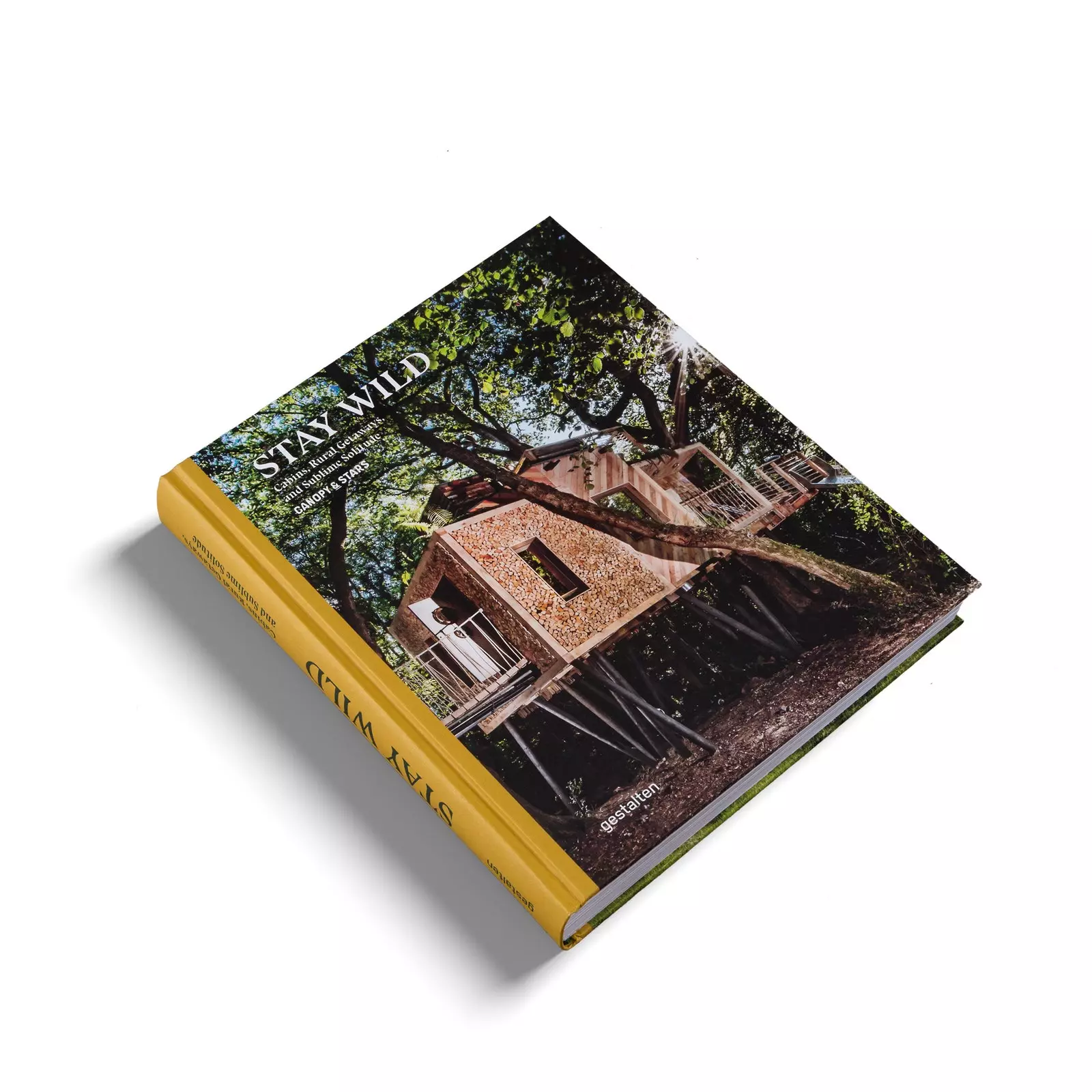
'stay wild'
We seek a silence that leads us to find ourselves but, Perhaps the noise is generated by us, invaders of a world where the wild dominates, patiently? Is this invasion of the natural state the maximum expression of our egoism, that which we try to get away from by fleeing the asphalt?
santiago lorenzo he called them 'The Mochuca' in his novel the disgusting (Ed. Blackie Books), those urbanites who came on weekends to the paradise of Zarzahurdiel to flood it with digital beeps, noise, shouts, restlessness... of supposed civilization, when the industrial lawn replaces the weeds and the chalet replaces the cabin: "If the fear of silence is of people cowering before themselves, they lived in the passage of terror." Let's not be La Mochufa.
It's easy to fall for the aesthetic beauty of the cabin. Nevertheless, its true value is that it gives us the possibility of inhabiting the forest, of walking it, of giving names to the calls of the birds, of living the seasons, of rejoicing in the connection with the environment and not just looking for disconnection. The value of the cabin is its power to prevent the rush of life from slowing us down. It's getting a room of your own.
***This report was published in *number 145 of Condé Nast Traveler Magazine (Spring 2021) . Subscribe to the printed edition (€18.00, annual subscription, by calling 902 53 55 57 or from our website). The April issue of Condé Nast Traveler is available in its digital version to enjoy on your preferred device
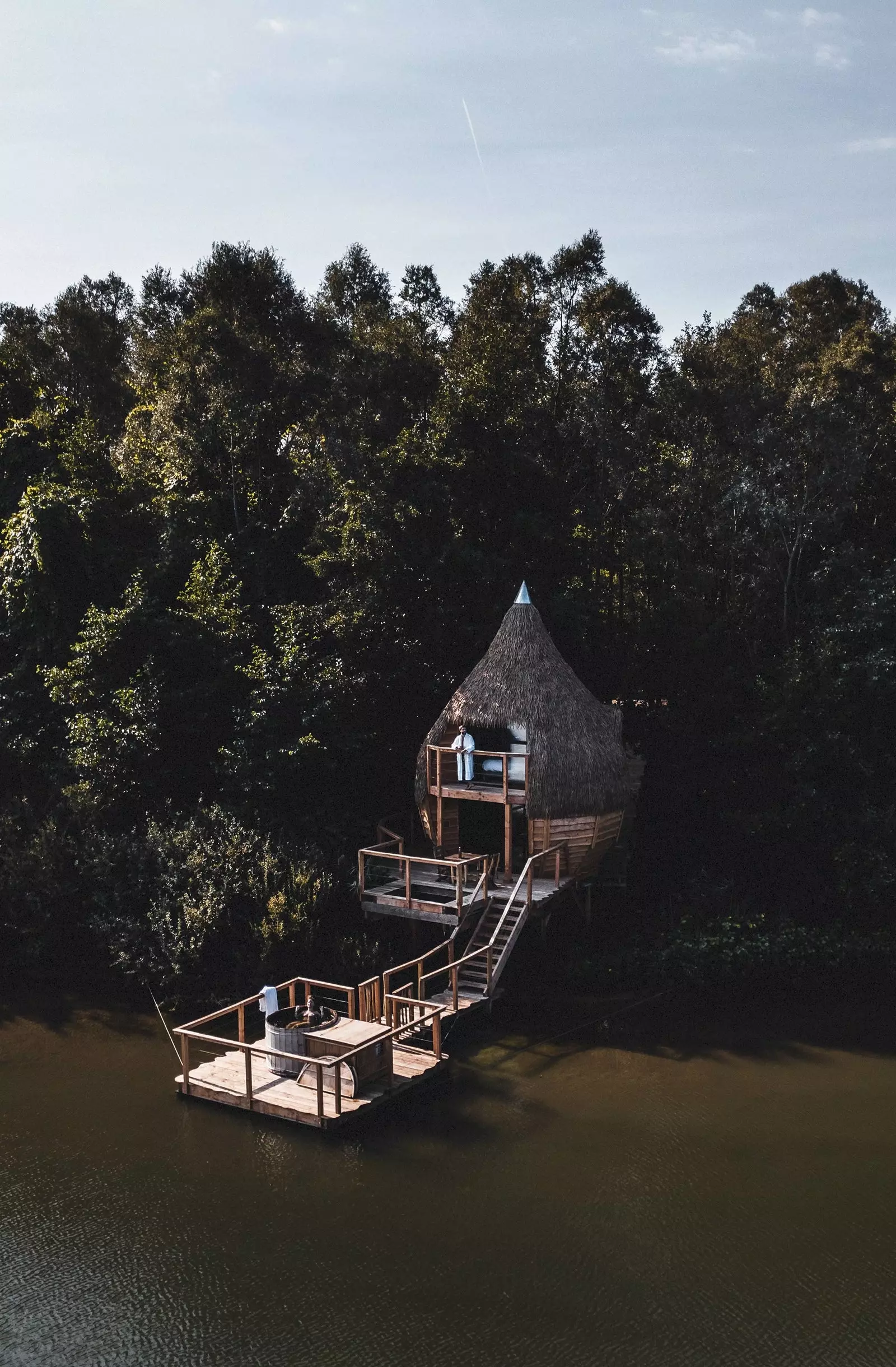
To stay in idyllic places? Spa Songe de Coucoo, in the lakes of the Franche-Comté region
